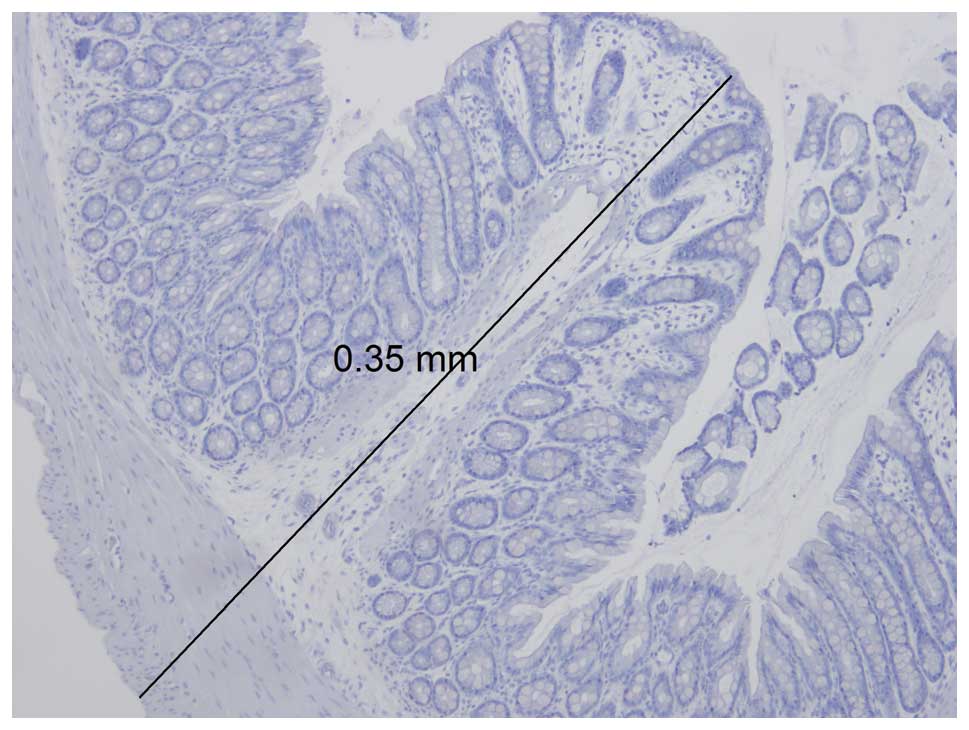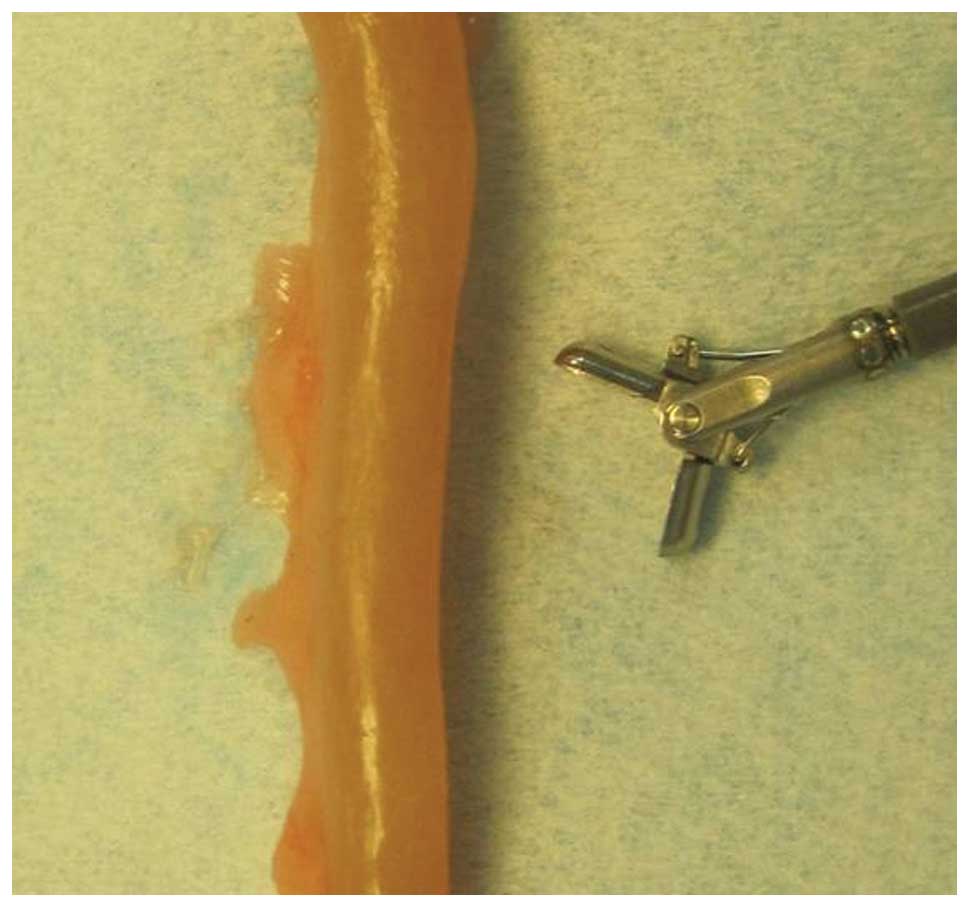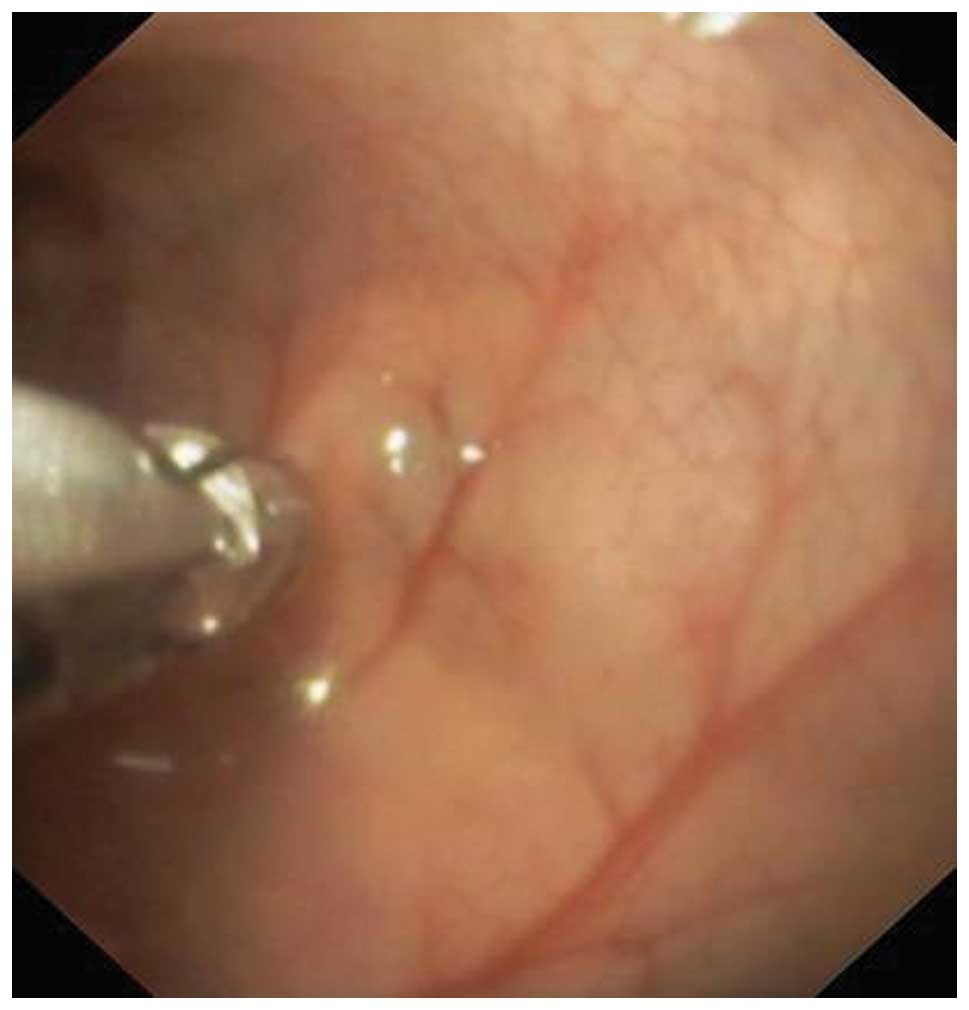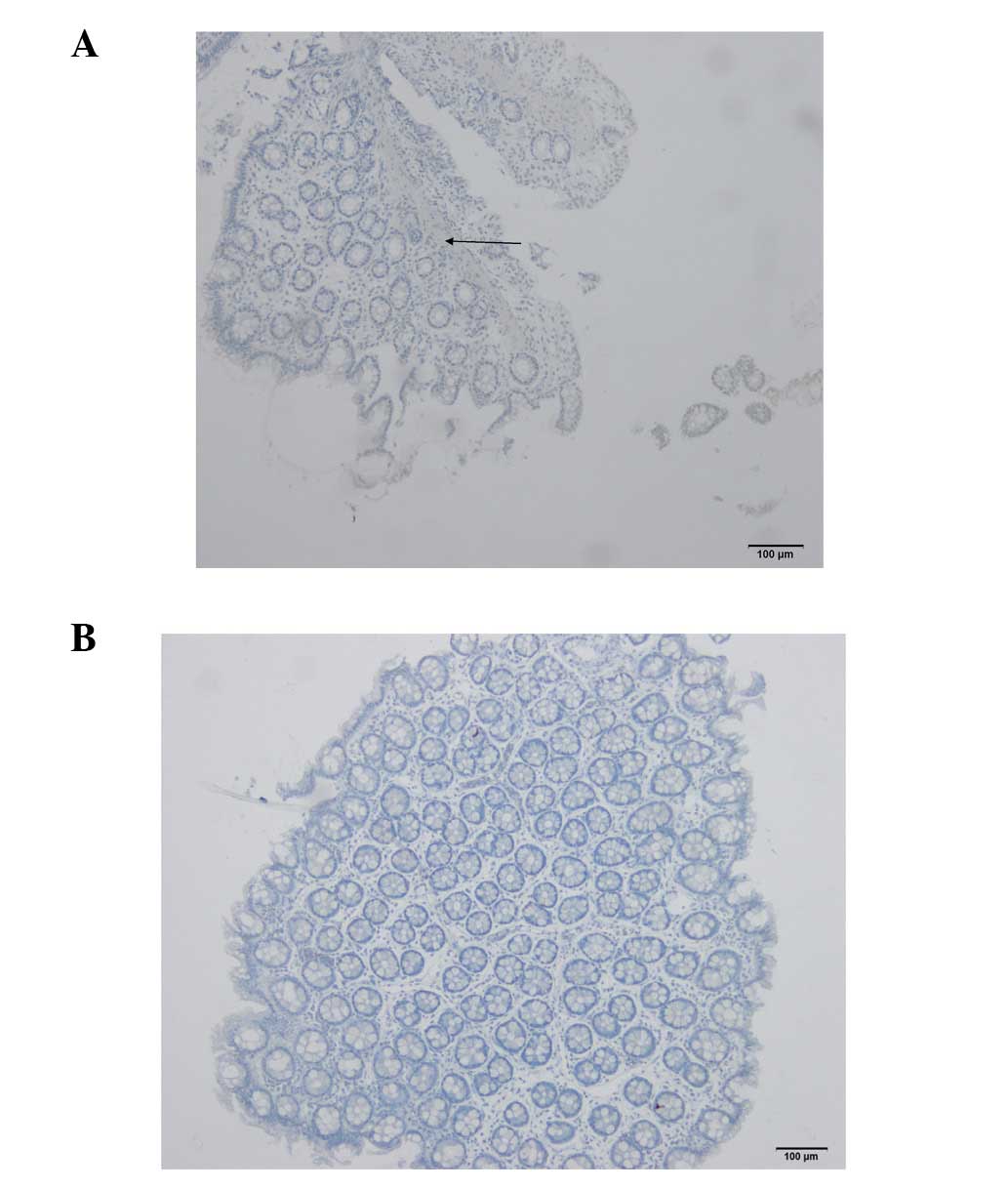Colonoscopy with mucosal biopsies in young rats: A model for experimental gastroenterology
- Authors:
- Published online on: April 10, 2013 https://doi.org/10.3892/mmr.2013.1422
- Pages: 1757-1760
Metrics: Total
Views: 0 (Spandidos Publications: | PMC Statistics: )
Total PDF Downloads: 0 (Spandidos Publications: | PMC Statistics: )
Abstract
Endoscopy is an important tool in the diagnosis, follow-up and management of several gastrointestinal diseases. In experimental studies, the course and progression of gastrointestinal lesions are followed by sacrificing animals at specific time intervals and the disease is usually assessed postmortem. This approach has several disadvantages, including the requirement of a large number of experimental animals and the inability to evaluate and follow the progression of the same lesion. The present study tested the feasibility of performing a total colonoscopy with mucosal biopsies in small, young rats. Eighteen adult male Wistar rats with an average bodyweight of 194 g (range, 166-232 g) were used. Three bowel preparation regimes with different fasting times and doses of sodium-picosulfate and magnesium citrate were examined. A video gastroscope with a 4.9 mm outer diameter, 210/120˚ up/down tip deflection, 103 cm working length, 140˚ view field and a 2 mm working channel (GIF-N180, Olympus, Tokyo, Japan) was used. The rats were anesthetized by inhalation of isoflurane prior to and during colonoscopy. Biopsies were obtained using biopsy forceps through the endoscope working channel. The animals were allowed to recover and were monitored for ~1 h, following the procedure. Sections from the biopsy samples taken during colonoscopy and colon tissue obtained during postmortem laparotomy were stained with hematoxylin and eosin. The optimum results were obtained with the bowel preparation that involved rats fasting for 24 h and the administration of 1 and 2 ml of sodium-picosulfate/magnesium citrate at 24 and 12 h prior to colonoscopy, respectively. Colonoscopy was performed with minor complications, with the only difficulty arising when maneuvering the endoscope past the hepatic flexure. This was achieved by manual rotation of the endoscope shift to the right and left of a two-way endoscope. Taking biopsies with the forceps at full jaw length and swing resulted in perforation, which may be avoided by obtaining biopsies with the outer tip of the biopsy forceps.

















